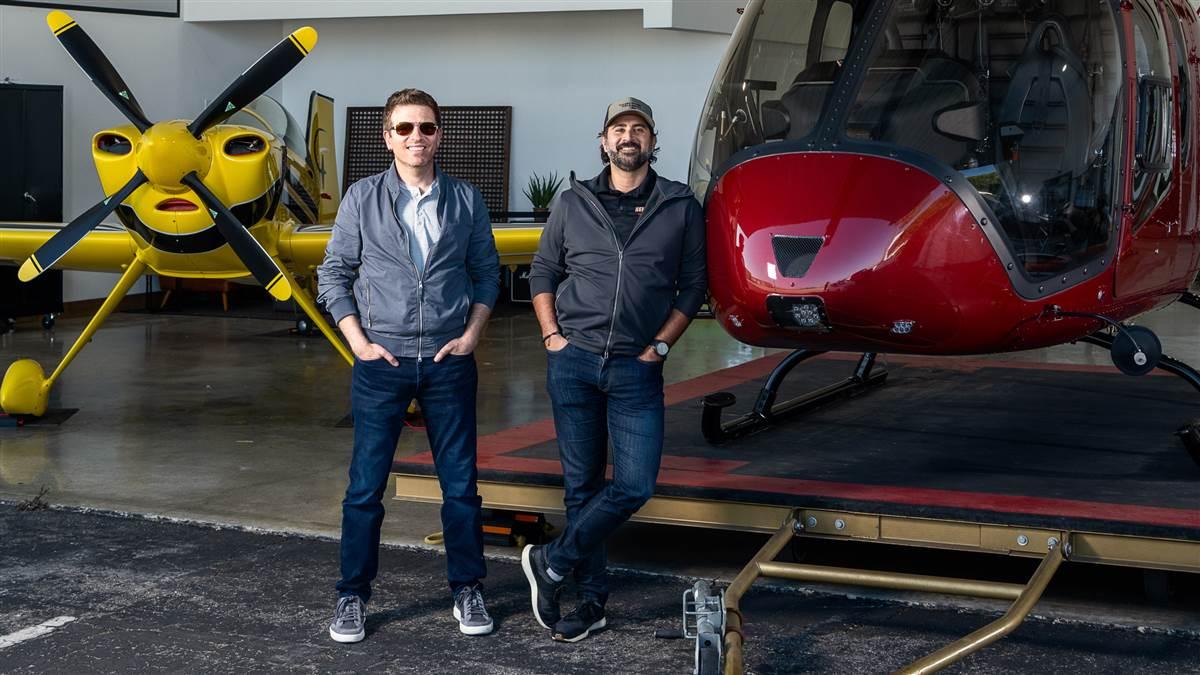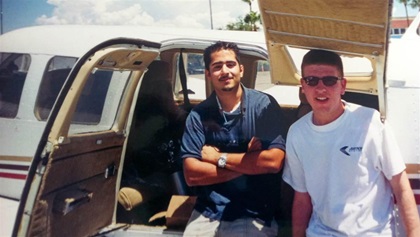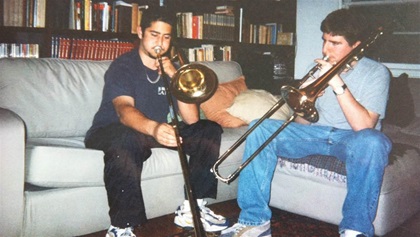Changing the world
Young entrepreneurs become leaders in mobility

Now age 39, the two business partners have formed a sort of yin and yang that has led to highly successful ventures. Cyrus Sigari has flowing dark hair and scruffy beard, a sign of his gregarious, adventurous life climbing mountains around the world. Ben Marcus is the more reserved of the two. His face clean shaven, hair closely cropped, he’s the tech guru and yet seeks adventures in his own ways, including flying his ultra-high-performance aerobatic airplane, a GameBird. “We’re like dual processors,” Sigari says. “We teach each other.”
A television show inspired 13-year-old Marcus to volunteer for Angel Flight, an organization that provides aerial transportation to patients headed to distant locations for medical treatment. Soon he recruited Sigari, and they found themselves as young teens flying as co-pilots on missions in Cessna 414s and Beechcraft King Airs while also coordinating missions for Angel Flight.



They learned to fly together at Santa Monica, soloing at 16, earning private pilot certificates at 17 and flight instructor certificates at 18. When it was time for college, they went to aerospace engineering school together at Purdue University.
After graduation their early careers went different directions. Marcus, at age 21, was the number one Cessna salesman at Tom’s Aircraft, Sigari says. He, meanwhile, was an engineer at the then-new Eclipse Aviation, working on the cutting-edge Eclipse 500 very light jet (VLJ) in Albuquerque, New Mexico. Sigari recruited Marcus to Eclipse to work on the exciting new airplane. “I always admired him for taking the job—making a lot less money, but he believed in it,” Sigari said. At the startup, the two ultimately switched roles, with Marcus moving from his Cessna sales jobs into an engineering position and Sigari moving from engineering at Eclipse into sales.
As the Eclipse project struggled, the two saw many customers wanted what the Eclipse 500 promised, but couldn’t get it. The two left the company in 2006 and formed their own, jetAVIVA, specializing in acceptance flights for customers and the sale of used business jets. The pair found success in helping customers access quality business jets, thriving even during the financial crisis of 2008 to 2010 with jetAVIVA becoming the largest business jet sales organization in the country. The lessons they learned about helping people and making connections would propel them into a host of new ventures over the next decade.
In 2008, Sigari sent an email to 10 Cessna Citation Jet owners, suggesting they meet in Las Vegas just to hang out. No agenda, just socialize and share experiences. That first meeting was the beginning of what is today the CJ Pilots Association, one of the most successful type clubs ever. “I really learned the power of community,” Sigari says. “I didn’t ask anything. Just got to know people.” He later had similar success with the first meeting of Embraer Phenom owners.
Wanting to impact even more people, Marcus began exploring the emerging vertical takeoff and landing (VTOL) market, recognizing it could democratize aviation. “There were lots of people working on aircraft. I didn’t want to start another aircraft company,” he said. But, growing up in Los Angeles, he understood complex airspace and was concerned about the potential impact of thousands of drones and VTOLs entering the market. In 2014, he co-founded AirMap, which has become a global leader in software systems for drone airspace management. “We could supply 100,000 flights per day with no people involved,” Marcus says. The FAA, meanwhile, uses some 15,000 controllers to manage 45,000 manned flights a day. He sold the company in November 2021.
While Marcus saw a bright future in drones and VTOL, Sigari was less convinced. It wasn’t until longtime friend Peter Diamondis demonstrated a DJI drone for Sigari that he could imagine the possibilities for devices like that ultimately carrying people—and he saw the possibilities as 100 times larger than the VLJ market where he had once worked. “Peter was an inspiration,” Sigari says of the entrepreneur and founder of the XPrize Foundation.
Sensing the opportunities around VTOL and the burgeoning need to move things around the planet in an environmentally sensitive way, he set up an informal meeting of VTOL leaders in Alpine, Wyoming, at the home of developer Steven Funk. Matt Mead, then the governor of Wyoming, participated as did around 40 other industry leaders and potential investors. As with other initial meetings he led, Sigari said there was no agenda—just an opportunity to get people together and share ideas.
“It was magical,” Sigari says. “Partnerships and companies formed.”
The event caught the attention of Steuart Walton, of the Walmart founding family and an active pilot, aircraft owner, investor, and founder of Game Composites, which builds the GameBird in his hometown of Bentonville, Arkansas. He agreed to host a similar event the next year—2018—in Bentonville. The second UP.Summit, as the event came to be known, was invitation-only to 100 top investors and entrepreneurs. Five new products were launched out of conversations that started there.
Investor and real estate developer Ross Perot Jr. hosted the event in 2019 at his Texas ranch, where 160 people, including former President George W. Bush, numerous governors, and three former FAA administrators, gathered to share ideas.
Investors at the meetings suggested that Sigari and Marcus work to create a fund that will support companies attempting to transform “the moving world.” The result is the UP.Partners venture fund, which includes Sigari and Marcus as managing directors along with Adam Grosser, another longtime pilot, aircraft owner, and investor. The fund was announced in October 2021 with a value of $230 million to invest in “the pioneering entrepreneurs who are creating the key enabling technologies that help move people and goods cleaner, faster, safer, and more efficiently in a multi-dimensional world.”
Backers of the fund include Alaska Airlines, Toyota, ARK Invest, Perot’s company Hillwood, Steven Funk, and others.
“The movement of people and goods is the underlying fabric of society,” says Sigari. The “first internet” provided low latency access to data, Sigari said. The “second internet” will provide low latency access to stuff—in three dimensions, including via air, ground, and marine.
Investment targets range from companies creating delivery drones or ultra-low-cost light detection and ranging sensors for autonomous movement of vehicles to electricity grid enhancement that improve recharging.
The fund has invested in numerous firms and examines proposals from as many as five companies a day, investing in maybe one percent.
“We want to be the place people think of if they are starting an aerospace company,” Sigari said. “We are on the precipice of a renaissance”—a renaissance led by two young guys who met in a parking lot at a CAP meeting and for whom aviation has become a way of life.
Thomas B. Haines is the former editor in chief of AOPA media.



